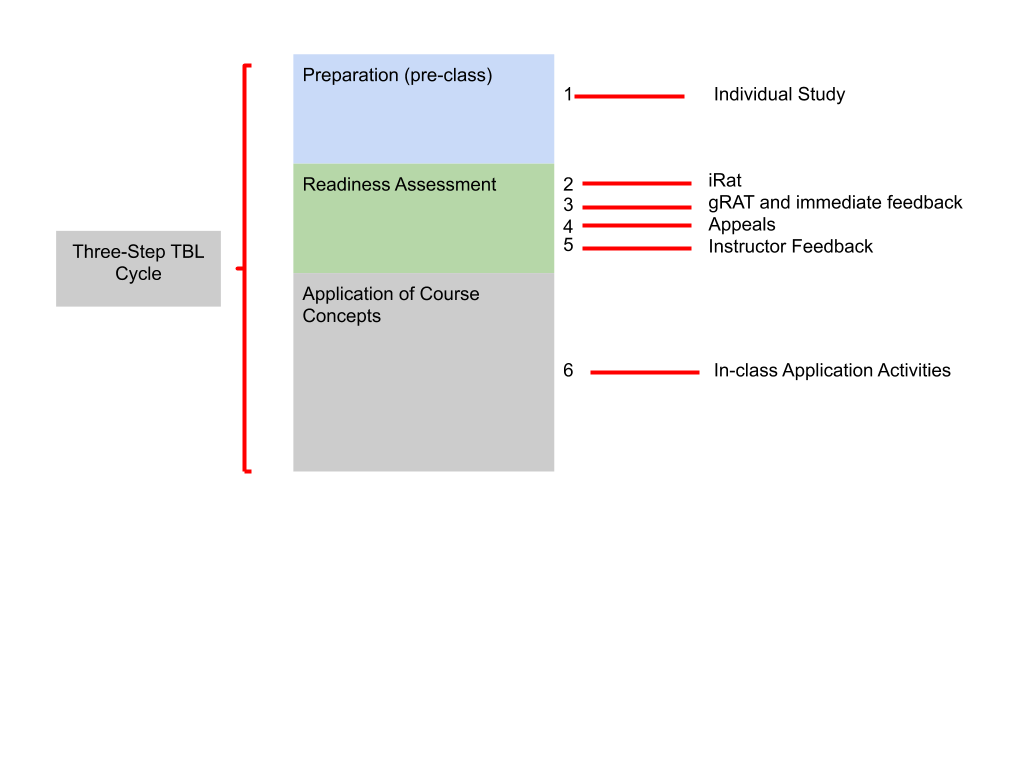Team-based Learning is an evidence-based, highly structured form of small-group learning. It’s designed in units of instruction, known as “modules”. These modules are taught in a three-step cycle.

Prior to coming to class, students are tasked with studying a set of predetermined material.
During the first class of the module, students are asked to participate in a “Readiness Assurance Process” orRAP. Concretely, students first complete a test individually (individual Readiness Assurance Test or iRAT) then as a group they complete the same test (group Readiness Assurance Test,” or gRAT). Both the individual scores and the group scores contribute to the students’ grades. Generally, the tests are multiple-choice, and students often complete the group test using an “IF-AT” sheet and score themselves. This reduces grading time, promotes student discussion of correct answers, and provides immediate feedback.
At the end of the Readiness Assurance Process, the instructor gives a mini-lecture that focuses on concepts with which students struggled the most.
After the students complete the group test, they have the opportunity to do a written appeal of a multiple-choice question they felt was poorly written, the answer was mistakenly coded, or their answer choice is better. This appeals process provides an opportunity for the students to review the material, assess their understanding, and in some cases present arguments to support and explain their initial responses.
Students use the rest of class time solving a predetermined problem. In doing so they apply their acquired knowledge to discipline-content related problems, and to discuss their ideas.
The In-class activities or problems utilized in a TBL classroom fall with the 4s Problem-Solving Framework. This means that all teams are required to work on the same problem, that the students are required to make specific choices about significant problems, and most importantly, that they all need to report their decisions simultaneously.
To learn more about TBL visit the official TBL website or contact OTL for more in depth information.